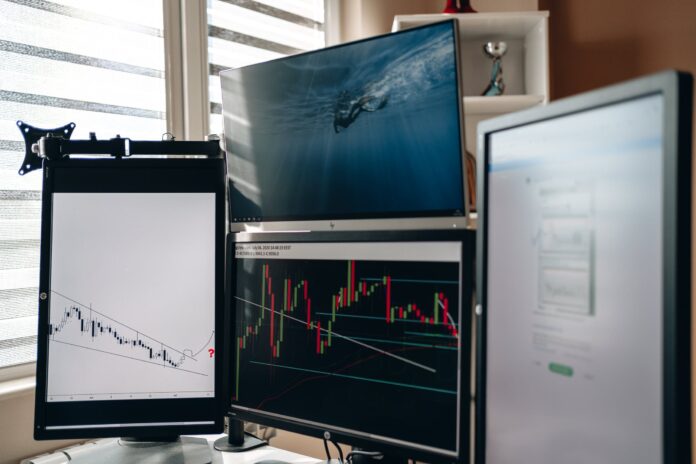The Bitcoin revolution has made it one of the easiest and most lucrative means of earning money. Be it daily trading or long term. The additional boon of blockchain technology is its agility and transparency that aids the proceedings in a user-desired manner.
It is now left to the user how to make use of the market up to the best of their abilities, may it be random trading strategies or technical ones.
This article throws light on both random and technical ways to trade to master crypto trading. It also helps you understand if random crypto trading strategies are more successful than technical ones or not.
What is Crypto Trading?

Crypto trading is the process of conjugating on varying prices in the crypto market or buying and selling crypto currency via an exchange both for profits.
What is Random Crypto Trading Strategies?
These are the strategies that a trader develops over time to avoid bad trading experiences.
However, an amateur trader can also develop these strategies by deeply researching the crypto market before trading.
Here are some of the basic random trading strategies you must know if you are someone who is a beginner in crypto trading. Some are also combined with technical trading techniques to enhance their efficiency.
Day Trading

Here the trader enters and leaves a particular trading position in the market on the same reading day. These are profitable in the crypto market as crypto markets often see a hike of higher percentages compared to stocks.
To track such intraday price variations, traders can use technical trackers like Bitcoin Revolution, which enables the investor to make easy and safe choices.
Strategy Of Entry And Exit
Timing plays a main role in making investments. Therefore, the investor must carefully look for the right time to invest in the market. This practice leads to expanding your portfolio and gives you the confidence to invest further.
It is equally important to know when to exit after achieving a particular target. Thus, by mastering the entry and exit strategy, an investor can play around wisely in the market and make the right choices.
Analyst Assistance

A few well-experienced analysts give out assistance according to how much the market price can hike above the current price. They can also analyze a certain value below which the crypto price would not fall.
This process lets the trader know the maximum profit and loss. They are called resistance and support, respectively. Several online software that provides algorithms for predicting and tracking the highs and lows of the market can be helpful.
Scalping
It is a technique in which the investor exits trades a few minutes after taking small profits after entering the market. The scalper essentially tries to collect small profits from many capitals because of the very low profits.
Scalpers thus have a low-risk probability on a particular capital. A good scalper analyses past trends in the market and decides the entry and exit points even before the investment is made. Due to a large number of capitals, it is good to maintain a track record of profits and losses from various capitals to know which one to invest in, in the future.
Arbitrage

Arbitrage is a strategy where the buyer buys a coin on one platform and sells it. It leads to a profit due to the disparity between the two platforms. It is recommended that one must monitor a track record of different currencies versus changes in their currency values.
It is similar to scalping as this method also gives less profit. Although it requires a good knowledge of different platforms, it is a very popular strategy in the market.
Portfolio Management
It is important to have a balanced portfolio. By including various cryptocurrencies, one can beat the volatility and have safer investments. It can also lessen the risks in the long run.
It is important to note that a few countries are skeptical about digital currencies. However, there are ways in which investors can plan to avoid these risks.
Investors can also set a monthly or annual investment rate, which reduces investment monitoring problems and keeps the portfolio track record clean.
Research Is The Key

It is a mandate to be well aware of the flow in the crypto market before you make any investments or trades. Primary research lets you understand how the market works, thereby reducing complexities in the later stages of trading.
There are plenty of online platforms from which you can begin. Using their predefined algorithms, they can ease your process to greater extents and thus help you smoothen your trading experience. Check Swyftx for more information.
Social Media Misleads
Look for authentic information backed up by trusted resources. There are high chances that one can go wrong by following the hype created on social media platforms. It would help if you kept in mind that digital finance is a hot topic, hence the probability of receiving false information.
While using particular trading software, investors must check the genuinity of the software and then make investments based on the risk that they would be fine to take. It is important to know that with high profit comes high risk.
Conclusion
Like any other market, the Crypto market requires experience and skills that have to be mastered over time. It also comes with its own set of risks and pitfalls.
The preference varies from person to person about which techniques, random and technical, are more successful. Though technical methods are sometimes tedious to follow, they mostly lead to accurate results.
Random trading strategies might differ from person to person as per their preferences. If they are combined with the right set of tricks, they can also lead to great results.
Sometimes crypto trading bots are also used by investors that assist them like any specialized software.
This article aims to make investors know some of the common crypto trading rules, thereby concluding which random or technical trading strategies give more success.








